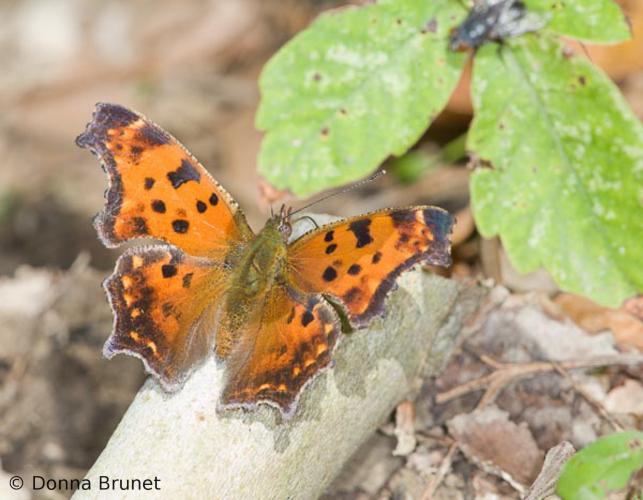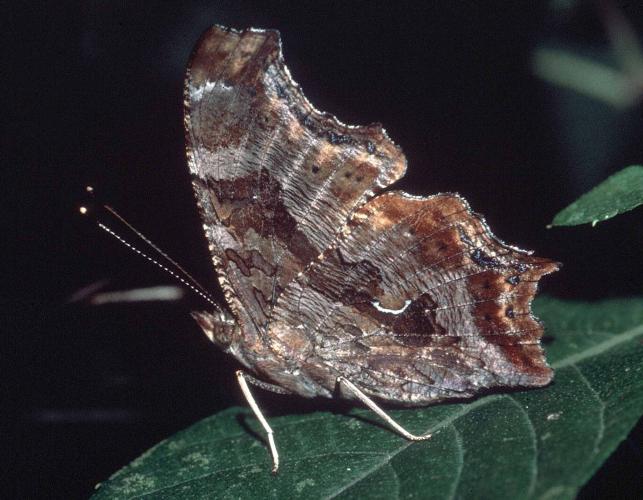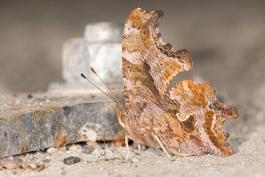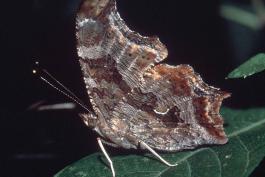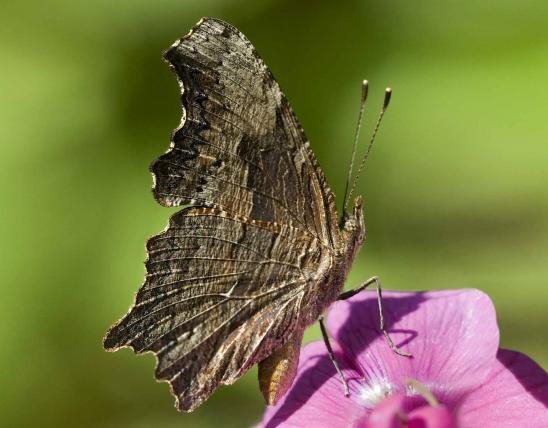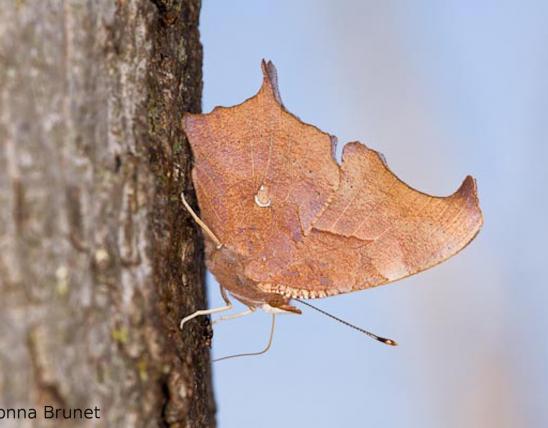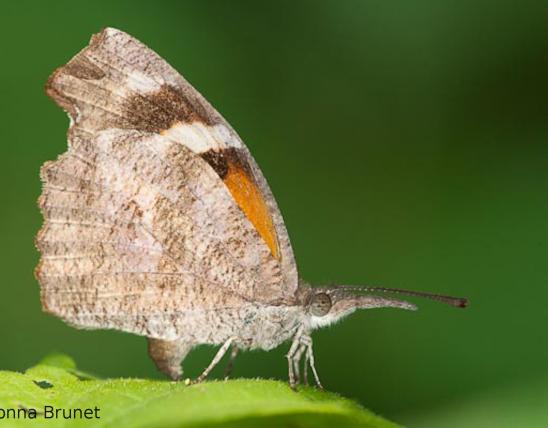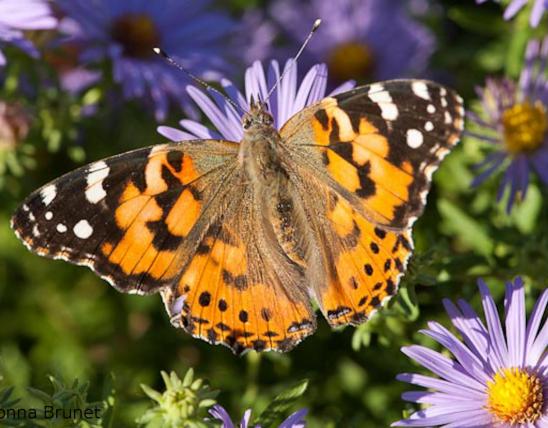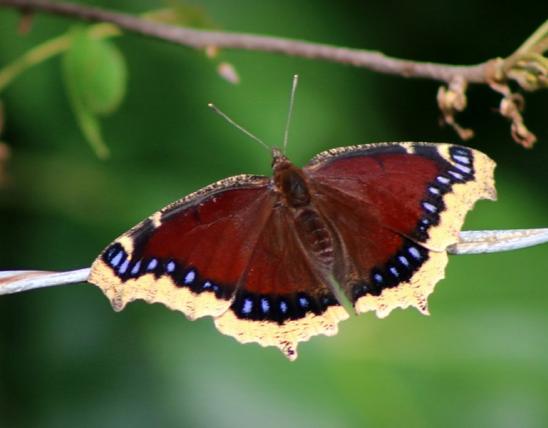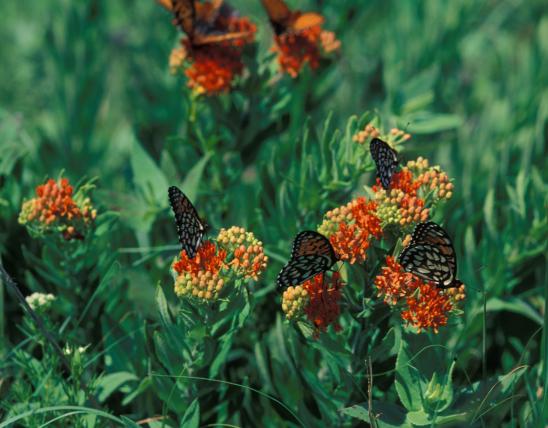
The eastern comma is named for a small white mark on the underside of the hindwing. It flies spring through fall, and even in winter, on warm, sunny days.
Adults: The orange and black dorsal (top) side of the eastern comma is similar to that of the closely related question mark, but it lacks the question mark’s hyphen-like line over the three black forewing spots. Also, the dorsal hindwing has a central dark smudge that is missing on another close relative, the gray comma. The hindwing has a ragged edge. Summer adults may have the dorsal hindwing completely dark, while the fall generation is more richly colored. The small white curving “comma” mark on the underside of the hindwing has wide, blunt ends. The underside of the hindwing is mottled with different shades of brown to orange-brown, but it is not heavily streaked as in the gray comma.
Larvae: Caterpillars that are whitish to greenish-brown with darker markings and several rows of pale, branching spines. The head has one pair of spines.
Similar species: The gray comma (Polygonia progne) may be slightly smaller overall, but like the eastern comma, its three forewing spots are not topped by a black line. Beneath, however, its wings are heavily striated (finely streaked), its hindwing "comma" marking is L-shaped and narrows to a fine point at each end, and the forewing has a dark outer edge with several black chevrons in it. Also, the hindwing upperside lacks a central dark smudge. Its larval food plants include wild gooseberry (Ribes missouriensis) and its relatives.
Wingspan: 1½ to 2¼ inches
Statewide.
Habitat and Conservation
Eastern commas fly from spring through fall, in woodlands and along brushy roadsides. It’s possible to see them all year, as overwintering adults are occasionally active on warm, sunny winter days.
Food
Larval host plants include nettles (Urtica and Laportea), hops (Humulus), and elm (Ulmus). Larvae usually feed at night, but older larvae may create a shelter for themselves by folding over a leaf using silk. Adults may occasionally visit flowers, but they are more often found on tree sap and decaying fruit. They also visit mud puddles, carrion, and animal droppings.
Status
Breeding resident found in all regions of Missouri.
Life Cycle
Males perch on vegetation and wait for females to come near, flying quickly at other insects if they approach too near. Females may lay eggs singly beneath host plant leaves, but frequently they lay up to nine eggs stacked one on top of the other. The female may be taking advantage of a break in bad weather to lay a few additional eggs, or she might be taking advantage of a good site for egg laying. The fall brood hibernates during winter; in spring they fly and the lay eggs for the summer brood.
Human Connections
For philosophers and poets, butterflies are a source of inspiration and of symbols. Nathaniel Hawthorne wrote, “Happiness is a butterfly, which when pursued, is always just beyond your grasp, but which, if you will sit down quietly, may alight upon you.”
Ecosystem Connections
Butterflies and moths are very closely linked to their food plants. While the larvae of some species can eat a wide variety of plants, others require plants of only a handful of species. In the case of the eastern comma, the larvae can survive and grow on plants within a few families.

